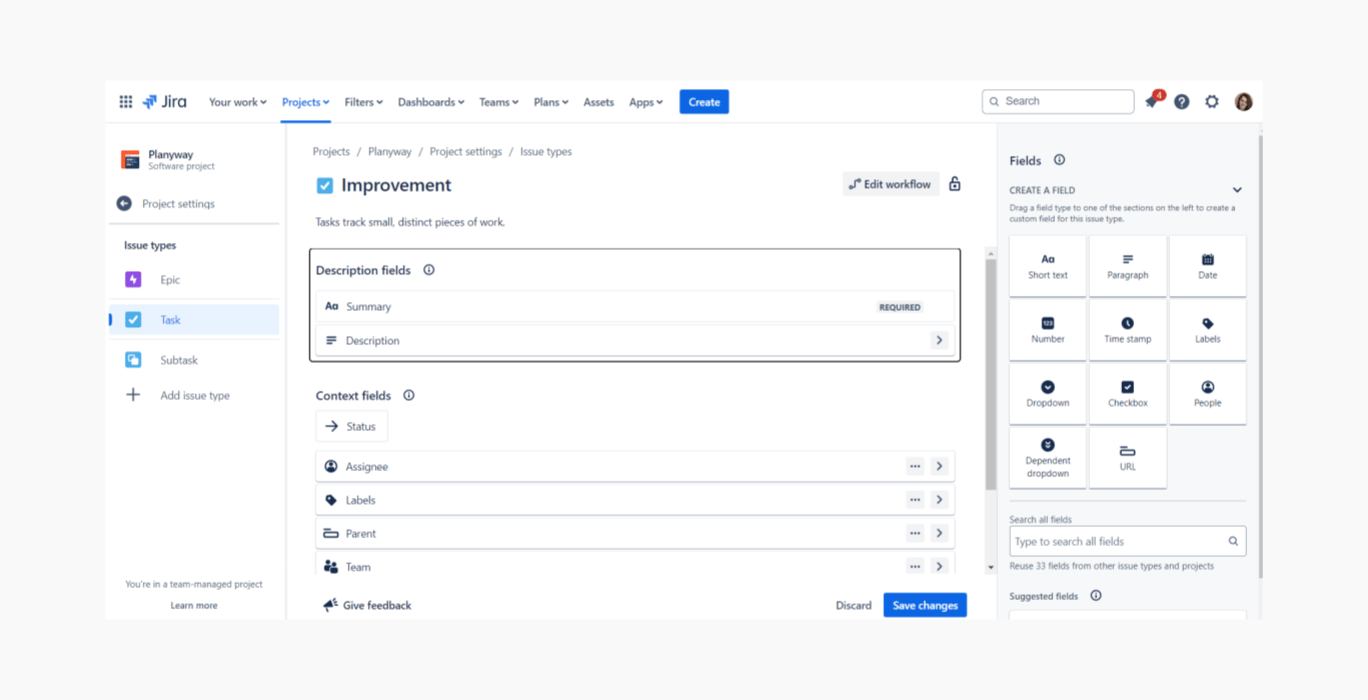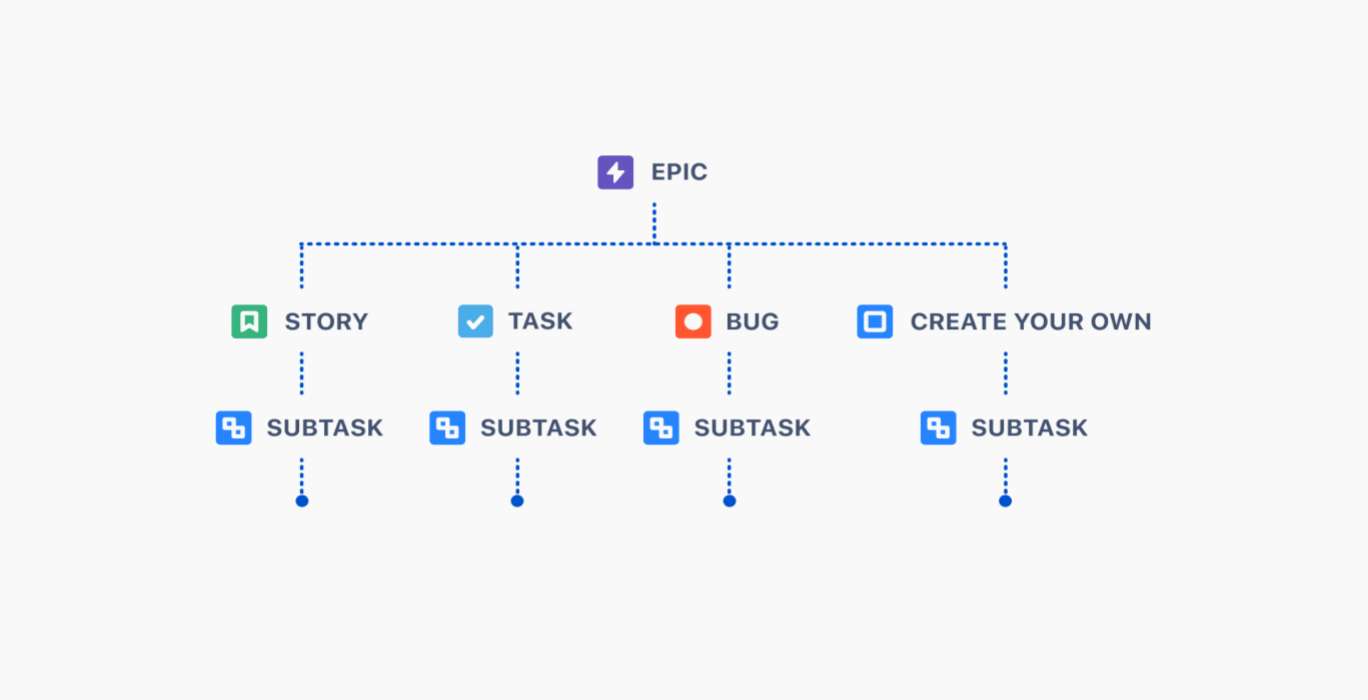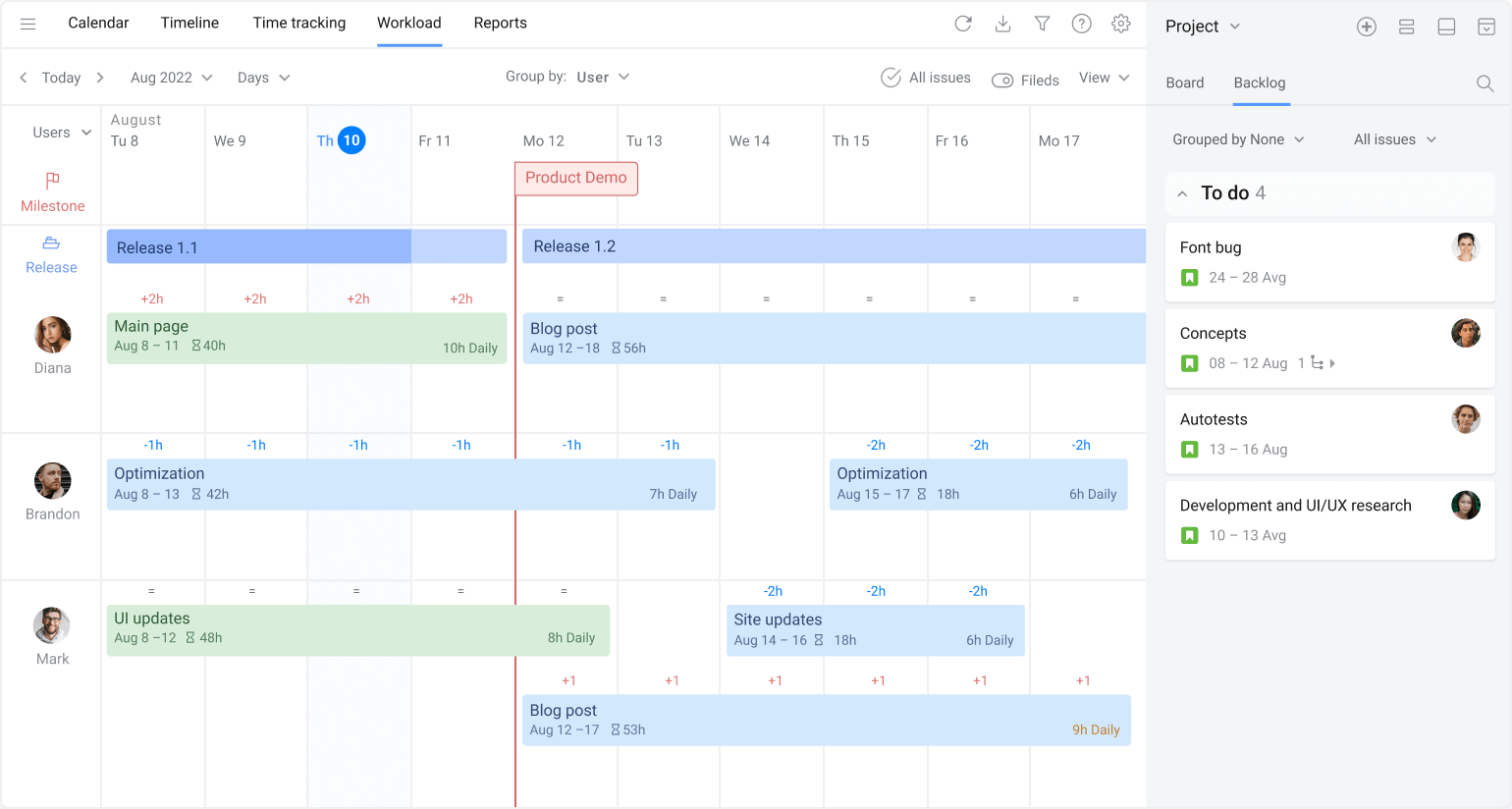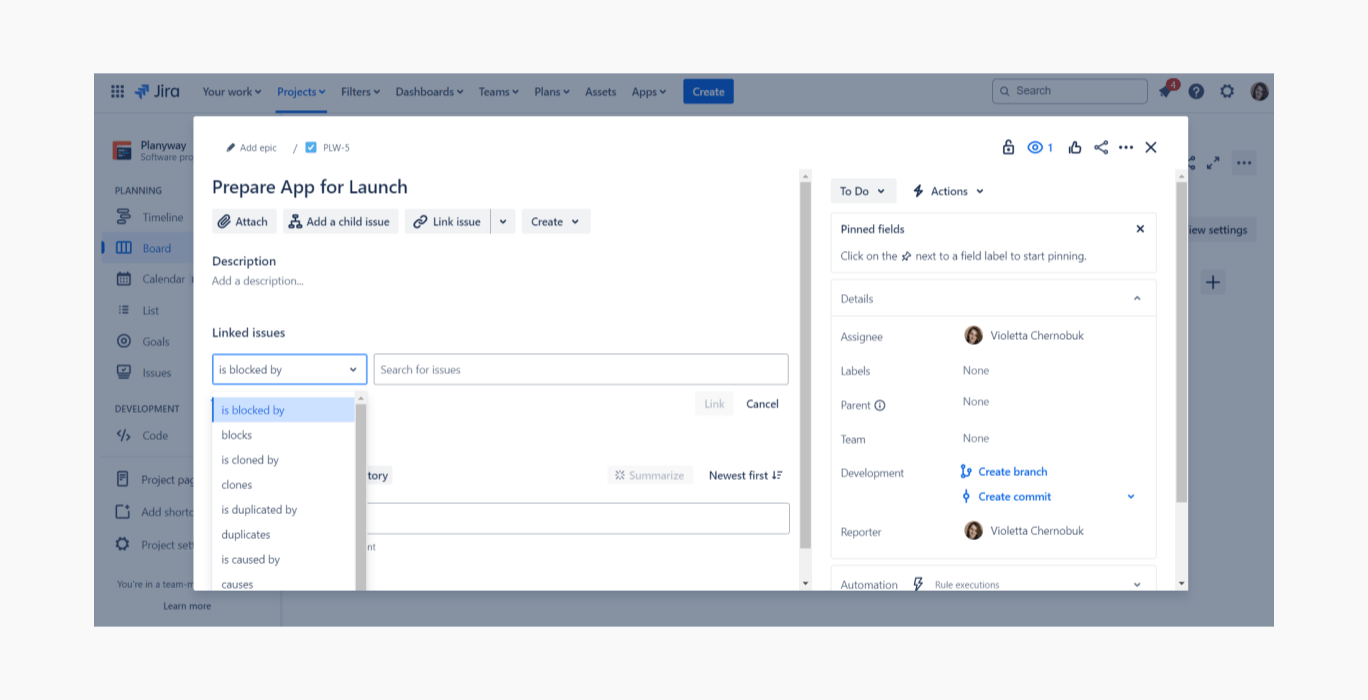Community resources
Community resources
Community resources
Jira Issue Types: A Complete Guide for 2025
Jira is a powerhouse tool for agile teams, but its true potential lies in understanding and mastering Jira issue types. Whether you're new to Jira or want to elevate your project management game, this article dives into everything you need to know about issue types, their hierarchy, best practices, and customization.
What Are Issue Types in Jira?
Issue types in Jira are the backbone of organizing and managing work. They represent tasks, bugs, stories, or any other unit of work in your project. Each issue type carries unique properties and workflows, enabling teams to categorize and address work efficiently.
Default Jira Issue Types
Jira comes with a set of predefined issue types:
-
Epic: represents large bodies of work that can be broken down into smaller tasks or stories.
-
Story: a user-centric requirement or feature.
-
Task: a generic piece of work that needs completion.
-
Bug: an issue that represents a problem or defect.
-
Sub-task: a smaller, actionable piece of a larger task or story.
Custom Issue Types
Jira also allows the creation of custom issue types to cater to unique project needs. Examples include:
-
Initiative: a strategic objective spanning multiple epics.
-
Change Request: used for tracking changes in scope.
-
Risk: identifies potential risks in the project lifecycle.
Parent and Child Issues
Understanding parent and child relationships in Jira is crucial for structuring work effectively.
-
Parent Issue: represents a higher-level task, such as an Epic or Task.
-
Child Issue: sub-tasks or smaller work items associated with the parent issue.
For example, a parent issue ("Build Landing Page") might include child issues like "Design mockups," "Write HTML/CSS code," and "Test responsiveness."
Why It Matters: this hierarchy ensures all parts of a task are accounted for, while allowing granular tracking of progress.
The Anatomy of a Jira Issue
 Every Jira issue has key components that make it actionable and traceable:
Every Jira issue has key components that make it actionable and traceable:
-
Summary: a concise title describing the issue.
-
Description: detailed information about the issue.
-
Status: current stage in the workflow (e.g., To Do, In Progress, Done).
-
Assignee: the person responsible for completing the issue.
-
Reporter: the person who created the issue.
-
Priority: indicates urgency (e.g., Low, Medium, High).
-
Linked Issues: establishes relationships with other issues (e.g., "blocks," "is blocked by").
-
Attachments: files or screenshots related to the issue.
-
Custom Fields: additional fields tailored to your team’s needs.
What Are Issue Type Hierarchy Levels?
 Jira organizes issue types into a hierarchy, allowing teams to manage work from strategic goals to granular tasks. Here's a typical hierarchy:
Jira organizes issue types into a hierarchy, allowing teams to manage work from strategic goals to granular tasks. Here's a typical hierarchy:
-
Initiative: the highest level (customizable) representing organizational goals or themes.
-
Epic: a major deliverable or large body of work.
-
Story/Task: individual pieces of work contributing to the Epic.
-
Sub-task: specific actions needed to complete a Story or Task.
Example:
-
Initiative: Improve User Onboarding Experience
-
Epic: Redesign Registration Flow
-
Story: Implement Multi-step Form
-
Sub-task: Design wireframes
-
Sub-task: Develop front-end
-
-
-
How Planyway for Jira Enhances Issue Visualization
For teams looking to elevate their Jira experience, the Planyway for Jira plugin is a game-changer. This tool allows you to visualize any issue type on a timeline, making it easier to track progress, plan projects, and manage team capacity. Key benefits include:

-
Unified Timeline View: see all your issues, including Epics, Stories, Tasks, and Sub-tasks, on a single timeline.
-
Team Capacity Management: plan workloads effectively by visualizing who’s working on what.
-
Drag-and-Drop Simplicity: adjust timelines and schedules with an intuitive drag-and-drop interface.
-
Cross-Project Planning: manage schedules across multiple Jira projects effortlessly.
Best Practices for Using Jira Issue Types
-
Use a Clear Hierarchy: stick to a logical structure with Epics, Stories, Tasks, and Sub-tasks.
-
Leverage Custom Issue Types: define custom types when your project needs to deviate from standard workflows.
-
Avoid Overcomplication: too many issue types can confuse users and dilute focus.
-
Use Linked Issues Effectively: establish relationships between issues for better context (e.g., "blocks," "duplicates," "relates to").
-
Adapt Workflows for Issue Types: create workflows tailored to specific issue types, ensuring tasks follow appropriate statuses and transitions.
What Are Linked Issues in Jira?
 Linked issues are relationships between two or more issues. These relationships provide context and dependencies, making it easier to manage complex projects. Common Jira issue link types include:
Linked issues are relationships between two or more issues. These relationships provide context and dependencies, making it easier to manage complex projects. Common Jira issue link types include:
-
Blocks: one issue prevents another from progressing.
-
Relates to: indicates a connection between issues.
-
Duplicates: identifies identical issues.
-
Causes: one issue results in another.
Conclusion
Mastering Jira issue types is essential for streamlining workflows, managing dependencies, and achieving project goals. By leveraging issue hierarchies, linked issues, and custom types, your team can maximize productivity and maintain clarity.
Start small by refining your default types, then experiment with custom configurations to meet your unique needs. With the right setup, Jira becomes a tool that adapts to your processes—not the other way around.
Was this helpful?
Thanks!
Mary from Planyway
About this author
Customer Support Manager at Planyway
Planyway
Kazakhstan
62 accepted answers
5 comments